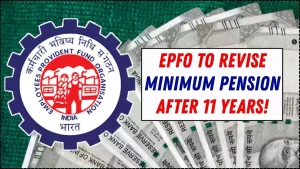If you’ve been looking for a safe, tax-efficient way to build a meaningful corpus for your daughter, Sukanya Samriddhi Yojana 2025 makes a compelling case. With a government-notified interest rate of 8.2% per annum, tax-free compounding, and a clear 21-year maturity structure, it’s designed to help parents reach a ₹70 lakh-plus target with steady, disciplined investing. The framework is simple: open the account before she turns 10, invest for 15 years, and let compounding do the heavy lifting until maturity without market volatility or tax drag.

Sukanya Samriddhi Yojana 2025 stands out for parents who want guaranteed growth, strong tax benefits, and a purpose-built plan for education and marriage goals. The scheme lets you contribute up to ₹1.5 lakh each financial year, qualifies for Section 80C deductions, and ensures both interest and maturity amounts remain tax-free. Because the interest is compounded annually and the rate sits at an attractive 8.2%, staying consistent with contributions during the 15-year deposit window can push the maturity corpus toward the ₹70–72 lakh range over the full 21-year term.
Sukanya Samriddhi Yojana 2025
| Feature | Details |
|---|---|
| Interest Rate | 8.2% per annum, compounded annually |
| Minimum/Maximum Yearly Deposit | ₹250 minimum; ₹1.5 lakh maximum |
| Deposit Period | 15 years from account opening |
| Maturity | 21 years from account opening; also on marriage after age 18 as per rules |
| Eligibility | Girl child from birth up to 10 years; one account per girl |
| Tax Treatment | EEE: deduction under Section 80C; interest and maturity tax-free |
| Partial Withdrawal | Up to 50% of previous FY closing balance at age 18 |
| Where To Open | Post offices and authorized banks; account transferable nationwide |
| Revival Of Account | Provision to regularize if minimum deposit is missed |
Sukanya Samriddhi Yojana 2025 is a rare combination of safety, predictability, and tax efficiency tailored to a child’s long-term milestones. Keep the focus keyword in mind here Sukanya Samriddhi Yojana 2025 because consistent annual contributions up to ₹1.5 lakh, an 8.2% annual interest rate with annual compounding, and EEE tax status give you a clear path to a ₹70 lakh-plus maturity. Open early, pay regularly, avoid unnecessary withdrawals, and let time do the compounding. For parents serious about building a secure, tax-free corpus for their daughter, this plan does exactly what it promises with minimal fuss and maximum clarity.
How The ₹70 Lakh Target Works
The math is straightforward and rooted in compounding. Contribute the maximum ₹1.5 lakh each year for 15 years. After that, stop new deposits and allow the balance to keep earning interest until the 21-year maturity. At the currently notified 8.2% interest, mainstream illustrations show a maturity value around ₹71–72 lakh if contributions are punctual and no premature withdrawals are taken. Of the final corpus, ₹22.5 lakh is your principal; the rest is compounded, tax-free growth. The earlier you start—ideally soon after birth the more compounding periods you capture, and the easier it becomes to hit the upper end of the projected range.
Eligibility Criteria And Account Opening Rule for Sukanya Samriddhi Yojana 2025
- The account can be opened by a parent or legal guardian for a girl child from birth until she turns 10.
- Only one Sukanya Samriddhi Yojana account is allowed per girl child; standard rules generally allow up to two daughters per family, with specific provisions in special cases like twins.
- Open the account at a nearby post office or authorized bank. You’ll receive a passbook, and the account can be transferred anywhere in India if the family relocates.
- Basic KYC of the guardian and the girl child is required. Keep the passbook updated for auditing contributions and interest credits.
Contributions, Tenure, And Maturity
- You can invest any amount between ₹250 and ₹1.5 lakh in a financial year, in lump sum or multiple installments.
- Contributions are required for 15 years from the date of opening; the account then continues to earn interest until maturity at 21 years.
- The account can be closed on maturity or upon the girl’s marriage after she turns 18 (subject to scheme rules and documentation).
- If you miss the minimum deposit in a year, the account can be revived by paying the specified regularization amount along with the missed minimum, keeping your long-term plan on track.
Interest Rate and Compounding
- Sukanya Samriddhi Yojana 2025 carries an 8.2% annual rate, with government review on a quarterly basis and interest compounded once a year.
- Because compounding is annual, maximizing each year’s contribution earlier in the year helps more of your money work for longer.
- Consistency matters: uninterrupted deposits for 15 years, followed by a passive growth phase for the remaining years until maturity, is what builds the sizable, tax-free corpus parents aim for.
Tax Advantages and EEE Status
- SSY enjoys Exempt-Exempt-Exempt treatment: contributions are eligible for Section 80C deduction up to ₹1.5 lakh annually, interest is not taxed, and the maturity proceeds are fully exempt as well.
- The EEE status is a major differentiator versus many other fixed-income products where interest is taxable. Over two decades, avoiding tax drag can significantly lift your effective returns.
- For families planning for higher education and marriage, the combination of guaranteed compounding and tax-free maturity provides certainty in both value and timing.
Partial Withdrawal and Liquidity
- Once the girl turns 18, up to 50% of the previous financial year’s closing balance can be withdrawn for higher education or marriage. This can be done as a lump sum or in installments over up to five years, offering flexibility for college fees or related expenses.
- Aim to use this facility only if essential, because tapping the corpus reduces the base available for compounding in the final years.
- Premature closure is allowed only under specified compassionate grounds (such as severe medical conditions) and in case of the depositor’s death, per scheme rules.
Practical Tips to Reach ₹70 Lakh
- Automate contributions: Set a monthly standing instruction of ₹12,500 to reach the ₹1.5 lakh limit smoothly and avoid last-minute shortfalls.
- Front-load deposits: When possible, deposit earlier in the financial year so funds compound for longer within the year.
- Avoid interruptions: Maintain the account in good standing; revive promptly if it becomes inactive to preserve long-term compounding.
- Resist early withdrawal: Unless absolutely necessary, avoid using the 18-year partial withdrawal to keep the growth engine intact.
- Track rate updates: While the rate is currently 8.2%, it’s reviewed periodically. Staying informed helps you manage expectations and communicate updates clearly to family stakeholders.
- Use calculators: Scenario-test different contribution patterns to understand trade-offs between monthly versus annual funding and the impact of starting earlier versus later.
Who Should Choose SSY
- Parents seeking government-backed security with predictable outcomes for a goal 15–21 years away.
- Families in higher tax brackets who benefit more from EEE status.
- Households comfortable with a locked-in structure where discipline is an advantage, not a constraint.
- Savers who want a low-maintenance plan administered via post offices or major banks with nationwide transferability.
Common Mistakes to Avoid
- Missing the deposit window: Skipping years sacrifices compounding and may require revival procedures; set reminders or auto-pay.
- Underfunding: If your target is ₹70 lakh, falling short of ₹1.5 lakh annually will likely reduce the maturity amount; plan a monthly SIP-like approach of ₹12,500.
- Ignoring documentation: Keep KYC, birth certificate, and passbook current to avoid operational delays during deposits, withdrawals, or closure.
- Confusing tenure with deposit period: Remember, deposits end after 15 years, but the account continues earning interest until 21 years don’t stop tracking it after year 15.
- Overlooking transferability: If you move cities, transfer the account rather than creating operational gaps in deposits.
Aadhaar Card New Rules — Update Your Name and Address Online for Free, Here’s How
Advanced Planning Ideas
- Laddering with other instruments: Pair SSY with PPF for parents and a dedicated liquid fund for near-term education payments, so SSY can compound untouched.
- Goal mapping: Work backwards from expected education costs at ages 18–21, then map how much of that goal SSY will cover at different annual contribution levels.
- Inflation lens: While SSY is tax-free and stable, inflation for education can be higher than general inflation, so consider complementing SSY with moderate equity exposure outside the scheme to keep pace.
- Documentation checklist: Maintain a dedicated folder—account opening forms, KYC, passbook copies, rate notifications, and any withdrawal or closure forms—to reduce friction later.
FAQs on Sukanya Samriddhi Yojana 2025
What Is the Current Interest Rate Under SSY
8.2% per annum, compounded annually and subject to periodic government review. This rate has remained one of the most attractive among small savings schemes recently.
How Much Should I Invest to Target ₹70 Lakh
Aim for the maximum ₹1.5 lakh each financial year for 15 years. Maintain the account without withdrawals until the 21-year maturity to keep the compounding intact.
Can I Withdraw for College Before Maturity
Yes. After the girl turns 18, you may withdraw up to 50% of the previous financial year’s closing balance as a lump sum or in installments over up to five years for education or marriage.
Is The Maturity Amount Completely Tax-Free
Yes. SSY enjoys EEE status, meaning you get Section 80C deduction on contributions, and both interest and maturity proceeds are fully exempt from tax.
















